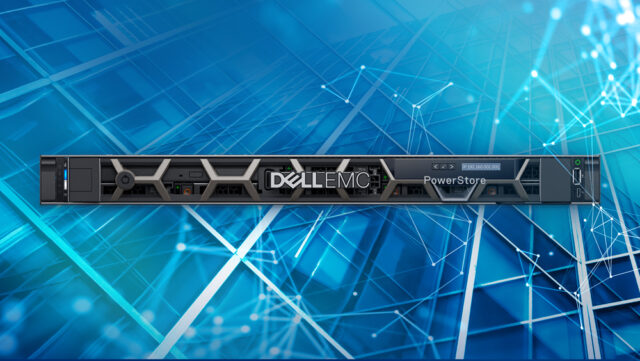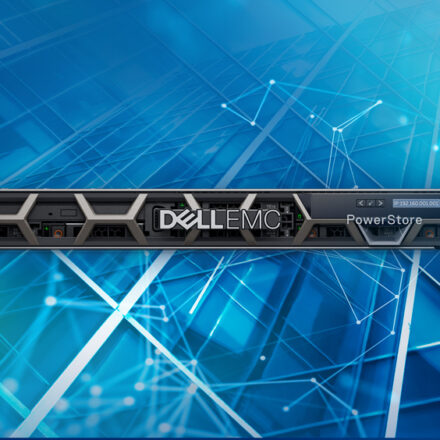Dell PowerStore Metro Volume, a cornerstone in the latest PowerStore 3.x revision, redefines operational simplicity and agility. With a container-based microservices architecture, advanced storage technologies, and integrated machine learning, PowerStore harnesses the true potential of data. This article delves into the intricate features, use cases, and the distinctiveness that set Metro Volume apart in the realm of data management.
Revolutionizing PowerStore
Metro Volume, driven by PowerStoreOS v3.0 and later, introduces Synchronous replication, a revolutionary feature ensuring transactional consistency between PowerStore clusters. This native metro synchronous replication stands out by enabling a high availability shared storage environment across a metro area distance, sans additional equipment or software purchases.
– Active/Active Configuration: Multiple ESXi hosts can write to either PowerStore appliance.
– ZERO RPO, RTO, and DTO: Supports a stretched “metro volume” across sites for enhanced flexibility and resilience.
– Simplicity in Setup: 100% software-based, configured in as few as 5 clicks or under one minute.
What it can do for you:
– Zero-downtime Storage Area Network (SAN) Maintenance and Data Migration: Metro Volume facilitates SAN maintenance and data migration without downtime. It allows for cluster offline tasks, such as relocating a cluster, service-affecting updates, and volume migrations to a new cluster.
– Storage Migration for Virtual Machine Migration: Seamless migration of VMware virtual machine disk files during data center transitions.
– Disaster Avoidance and Continuous Availability: Transparent movement of volumes between PowerStore clusters ensures continuous application operation, preventing data loss and minimizing downtime during planned or unplanned outages.
– On-demand Load Distribution: Proactive workload distribution, storage utilization balancing, and I/O traffic balancing between PowerStore clusters, ensuring optimal system operation.
But how about a sneak peek under the hood?
Metro Volume Replication
a) Key Features and Benefits:
Metro Volume’s synchronous replication guarantees real-time data commitment to both source and destination volumes, ensuring transactional consistency. In case of write I/O failure, Metro Volume assures consistency between replicated volumes, a critical advantage during normal operation and high availability scenarios.
– Real-time Data Commitment: Ensures data is written and committed to the replication source and destination volumes during normal operation.
– Guaranteed Consistency: In the event of a write I/O failure, ensures transactional consistency between replicated volumes.
– Operational Efficiency: Seamless integration and consistent presentation throughout the lifecycle.
b) Design and Architecture:
Metro Volume operates synchronously, designed for application high availability during planned migration, resource balancing, disaster avoidance, and proactive use cases. The architecture establishes a foundation for VMware vSphere Metro Storage Cluster designs, providing symmetric active/active data access to Metro Volumes between PowerStore clusters.
– Symmetric Active/Active Access: Ensures proactive use cases between PowerStore clusters.
– Foundation for VMware vSphere Metro Storage Cluster: Supports high availability designs in VMware environments.
c) Metro Volume Configurations and Topologies:
PowerStoreOS v3.x supports two metro topologies: Uniform storage presentation and non-uniform storage presentation. Uniform presentation allows both standalone and clustered servers to access a Metro Volume through both clusters, optimizing Multiple Path I/O (MPIO) paths for minimal latency. Non-uniform presentation, ideal for stretched cluster configurations, involves each storage host accessing a Metro Volume through one cluster.
– Uniform Storage Presentation: Optimal MPIO paths for minimal latency.
– Non-uniform Storage Presentation: Ideal for stretched cluster configurations.
d) New Witness Component for Additional Enhancements:
The release of PowerStoreOS 3.6 introduces a Witness component to the Metro Volume architecture. The Witness component enhances resiliency, mitigating the risk of split-brain situations by making intelligent decisions across various infrastructure outage scenarios.
Futureproofing Your Infrastructure
Dell PowerStore Metro Volume, with its cutting-edge features, stands as a cornerstone for organizations seeking seamless data management, high availability, and disaster recovery. Its meticulous design, synchronous replication, and integration capabilities position it as a strategic asset in the dynamic landscape of data-centric architectures. Metro Volume aligns with existing datacenter environments while paving the way for future innovations in storage and data management.
Discover the full range of Dell PowerStore products.
Watch a brief presentation of the new Witness capability, as well as an introduction to Metro Volume Synchronous Replication.


